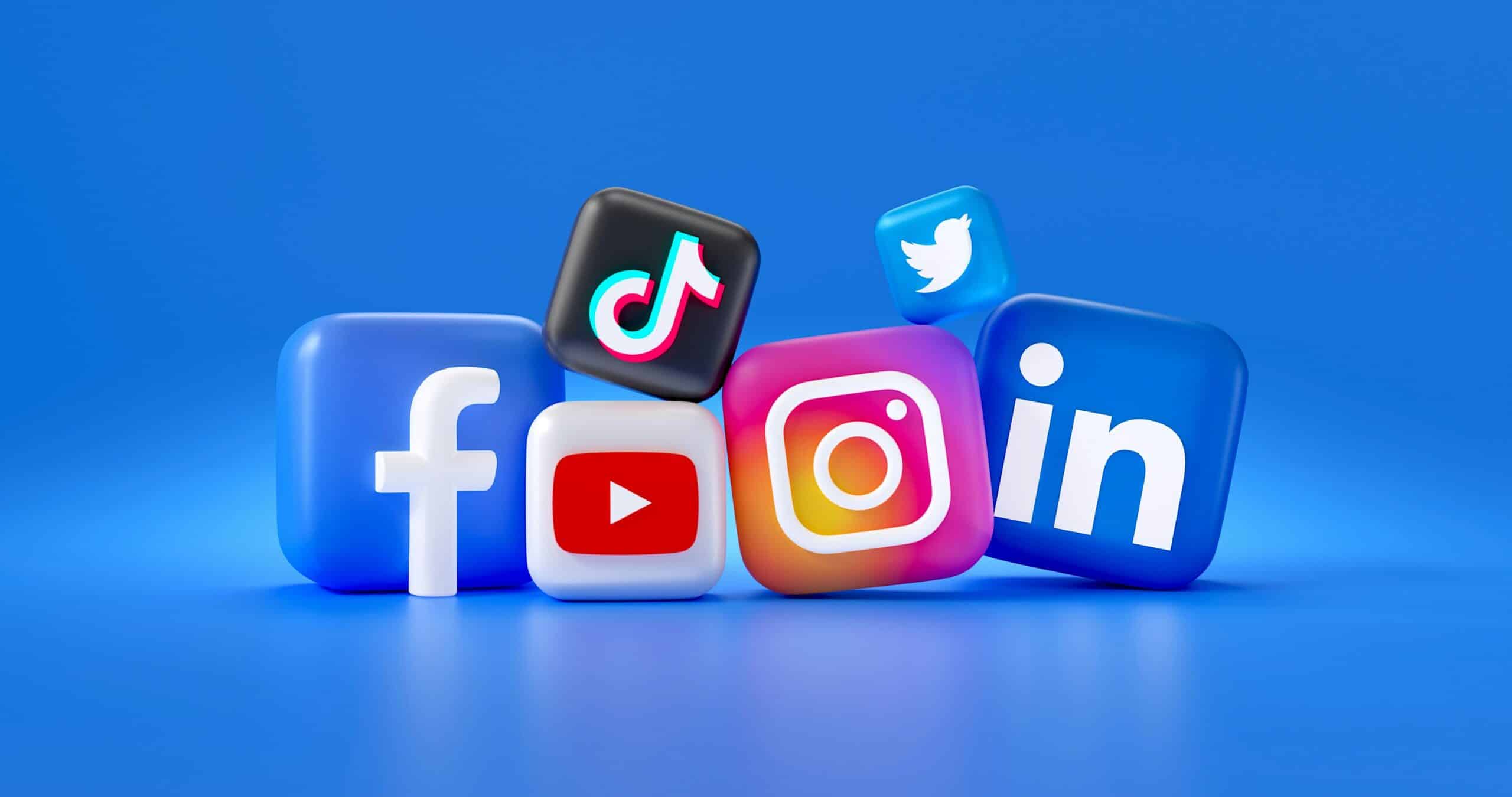Generating quality leads and turning them into loyal customers is the cornerstone of sustainable business growth. As digital channels evolve and buyer behaviors shift, businesses must adopt smarter, data-driven approaches to capture attention and drive conversions. This blog explores proven strategies—ranging from AI-powered lead scoring to multi-channel automation—that streamline customer acquisition and optimize every step of the funnel.
Key Takeaways
- AI-powered lead scoring, personalized email sequences, and CRM integration elevate lead quality.
- Content marketing with personalization and SEO techniques increases qualified leads.
- Social media platforms like LinkedIn and targeted paid social ads are crucial for B2B lead generation.
- Data-driven analytics and continuous testing optimize lead targeting and conversion rates.
- Automated engagement tools, including chatbots and multi-channel automation, streamline lead nurturing.
How Can Content Marketing Drive More Qualified Leads?

Content marketing plays a crucial role in attracting leads by providing helpful, relevant information at the right time. This section explores how targeted content can educate, build trust, and prompt action. When optimized properly, it increases visibility and delivers long-term value. Businesses benefit from aligning content with buyer needs and search intent. The strategies below ensure content becomes a consistent lead-generation engine.
What Types of Content Attract High-Quality Leads?
Educational content such as blog posts, videos, and webinars can draw in prospects seeking solutions. These formats offer value upfront and establish authority. Guides and how-tos show expertise and help build credibility. Interactive content like quizzes or calculators increases engagement. Content tailored to buyer stages ensures relevance from awareness to decision. Proper keyword use helps attract organic traffic with high intent. Effective CTAs convert passive readers into active leads. When distributed strategically, this content boosts both visibility and conversions.
How Does Personalization Improve Content Marketing ROI?
Personalized content reflects the unique needs and behaviors of individual leads. It makes messaging more relevant, increasing the chances of conversion. Segmenting audiences based on past activity or preferences enables tailored campaigns. Dynamic web pages and email content can adapt in real time. Personalization also improves trust by showing an understanding of user interests. This targeted approach leads to better engagement and longer time on page. Leads are more likely to interact when content speaks directly to their concerns. The result is a deeper connection and stronger performance across channels.
How Should Content Be Distributed to Maximize Reach?
Distribution is key to ensuring content reaches the right audience at the right time. Organic channels like SEO and social media help build long-term traffic. Paid promotion can boost visibility for time-sensitive or high-value content. Sharing across multiple platforms increases exposure and lead opportunities. Email newsletters extend content value to existing subscribers. Repurposing blog posts into videos or infographics widens the format appeal. Posting in relevant groups or forums drives targeted views. Consistency in distribution builds brand awareness. Combined, these tactics amplify reach and lead generation impact.
What Role Does Social Media Play in Enhancing Lead Generation?

Social media allows businesses to connect with potential customers where they already spend time. It provides a platform for brand visibility, relationship-building, and targeted outreach. This section outlines how to use social platforms strategically for lead generation. Each method offers ways to attract, qualify, and convert prospects. With the right approach, social media can become a high-performing acquisition channel.
How Can Targeted Outreach Improve Lead Quality?
Targeted outreach involves identifying and connecting with leads based on criteria like industry, interests, or behavior. Social platforms allow businesses to segment audiences and send personalized messages. Filters help narrow down the ideal customer profile. Messaging that speaks to specific needs encourages higher engagement. Outreach through comments, DMs, or community participation builds relationships. This approach shortens the path from awareness to conversion. The key is focusing on value-driven conversations. Precision targeting results in more qualified and conversion-ready leads.
Why Are Paid Social Campaigns Effective for Lead Acquisition?
Paid social campaigns allow for precise targeting based on demographics, interests, and behaviors. These ads can drive traffic to landing pages, gated content, or lead forms. Real-time analytics help refine campaigns for better performance. A/B testing identifies what messaging and visuals work best. Retargeting re-engages users who showed interest but didn’t convert. Paid promotions also boost visibility for organic content. When used strategically, they can scale lead generation quickly. This method ensures high-quality exposure and faster acquisition.
What Types of Social Content Build Trust and Engagement?
Content that informs, entertains, or solves problems fosters engagement on social platforms. Sharing behind-the-scenes updates, tips, or tutorials humanizes the brand. Case studies and success stories highlight real-world impact. Polls and Q&As invite interaction and boost visibility. Consistent posting builds familiarity and trust over time. Content should align with the audience’s interests and needs. Visuals, short-form videos, and infographics increase attention. A strong content mix supports lead nurturing and builds long-term connections.
How Does Data-Driven Analytics Optimize Lead Generation Efforts?

Analytics reveal which strategies work and where to adjust. They turn raw data into actionable insights that improve targeting, engagement, and conversion. This section explains how tracking the right metrics guides smarter decisions. Businesses that embrace analytics refine their lead generation with precision.
What Metrics Should Be Tracked to Measure Success?
Tracking metrics like conversion rate, bounce rate, and cost per lead helps measure effectiveness. These KPIs highlight how well campaigns attract and convert prospects. Website analytics reveal user paths and drop-off points. Monitoring email open and click-through rates identifies engaging content. Lead quality and pipeline velocity show downstream impact. Metrics should align with specific goals and funnel stages. Dashboards offer a centralized view for quick insights. Consistent tracking supports long-term performance improvement.
How Can Segmentation Improve Targeting Accuracy?
Segmentation breaks down audiences into smaller, more focused groups based on attributes or behavior. This allows for more tailored messaging and better alignment with buyer needs. Segmented campaigns typically see higher engagement and response rates. Dynamic content adjusts to each group’s interests and stage in the funnel. Segmentation can be based on demographics, firmographics, or behavior. It also allows for better testing of different strategies. The more accurate the targeting, the more efficient the conversion. Data-backed segmentation drives smarter lead generation.
What Is the Value of Continuous A/B Testing?
A/B testing helps determine which variation of a marketing element performs better. This might include subject lines, landing page layouts, or ad creatives. Running tests ensures that decisions are backed by user data. Results provide insight into user preferences and conversion drivers. Continuous testing prevents stagnation and keeps strategies fresh. Even small tweaks can lead to big performance gains. Testing supports a culture of experimentation and learning. Over time, it leads to more effective and reliable lead generation efforts.
Which Automated Engagement Tools Boost Customer Acquisition Rates?

Automated engagement tools help nurture leads, qualify prospects, and keep interactions consistent across channels. This section explores how automation streamlines touchpoints and improves outcomes. These tools reduce manual work while maintaining a personalized experience. Below are three approaches that make automation work smarter in lead acquisition.
How Do Chatbots Support Lead Qualification?
Chatbots offer instant, always-available support to website visitors and social users. They ask qualifying questions to gather lead details early in the journey. This saves time by filtering out unqualified traffic before handing off to sales. Chatbots can schedule calls, answer FAQs, or recommend resources. Their presence reduces response delays and improves engagement. Integration with CRM systems ensures data is stored and accessible. Chatbots also identify patterns in visitor behavior. Overall, they create efficient, scalable entry points for new leads.
What Are the Benefits of Multi-Channel Automation?
Multi-channel automation allows messaging to happen across platforms like email, SMS, and social in sync. It keeps branding consistent and ensures no lead falls through the cracks. Trigger-based workflows follow user actions to send the right message at the right time. Automation saves hours of manual effort and improves speed to response. It also helps maintain engagement throughout the funnel. Tracking responses across channels improves follow-up accuracy. Consistent outreach enhances recall and drives conversions. Multi-channel touchpoints reinforce trust and interest.
How Does Automation Improve Follow-Up Consistency?
Automated follow-ups ensure that leads are contacted at ideal intervals. Pre-built sequences reduce delays and avoid missed opportunities. Each touchpoint can be tailored to the lead’s last action or behavior. Automation provides structure and reliability, especially when lead volume grows. It also supports sales enablement by delivering timely insights and reminders. Follow-ups become more relevant and less intrusive. The result is higher engagement without added workload. Automation delivers a steady, dependable lead nurturing process.
How Can Lead Nurturing Strategies Increase Customer Acquisition?

Lead nurturing keeps prospects engaged between initial contact and final conversion. By using timely, personalized communication, businesses maintain interest and guide leads through the funnel. This section outlines techniques to build trust and momentum. A strategic nurturing plan reduces drop-off rates and boosts acquisition efficiency. The following H3s explain how to create a smoother path to purchase.
What Tactics Deepen Lead Engagement?
Consistent communication is key to deepening engagement and building trust. Email drip campaigns tailored to buyer stages provide ongoing value. Personalized messages based on lead behavior strengthen connections. Offering gated content or exclusive access encourages interaction. Educational content helps address objections and showcase expertise. Segmented follow-ups ensure relevance and avoid overcommunication. Behavioral triggers keep outreach timely and context-aware. Over time, these touches move leads closer to conversion. Engagement turns interest into lasting commitment.
How Can Referral Strategies Enhance Nurturing?
Referral strategies use satisfied customers to attract new leads with built-in trust. Encouraging current clients to share experiences expands reach naturally. Referral incentives, such as discounts or bonuses, motivate participation. Referrals often convert faster because trust is already established. Follow-up workflows can invite referrals after key milestones or purchases. Highlighting success stories in nurturing sequences reinforces credibility. Referred leads tend to be higher quality and more engaged. This strategy builds community and drives sustainable acquisition.
Why Is Lead Segmentation Essential to Nurturing?
Segmenting leads ensures each contact receives relevant messages based on their stage, interest, or activity. This targeted approach improves open and click-through rates. Segments can be based on engagement level, company size, or behavioral patterns. Personalized messaging shows that the business understands the lead’s needs. Automating responses by segment keeps communication efficient. Leads that receive tailored content are more likely to convert. Segmentation also makes it easier to test and refine campaigns. It’s a powerful way to elevate nurturing performance.
Frequently Asked Questions
How important is AI in improving lead quality?
AI plays a critical role in enhancing lead quality by analyzing behavioral patterns, demographic data, and engagement history. It helps prioritize high-potential prospects so marketing teams can focus efforts on leads most likely to convert.
What are the main benefits of using automated email sequences?
Automated email sequences deliver consistent, personalized communication triggered by user actions or behavior. These workflows maintain engagement throughout the customer journey, reduce manual tasks, and increase efficiency.
How does CRM integration impact lead management?
CRM integration streamlines lead management by unifying data across departments, automating segmentation, and triggering timely follow-ups. This leads to stronger collaboration between marketing and sales, better tracking of lead progress, and improved personalization. Nurture Machine’s CRM connectivity allows for real-time updates and centralized workflows that enhance pipeline visibility and conversion tracking.
What content formats work best in attracting high-intent prospects?
High-intent prospects respond well to content that provides deep value and addresses their specific needs. Formats such as in-depth guides, white papers, case studies, and webinars help educate and build trust. Interactive tools—like quizzes, assessments, and calculators—also perform well by offering customized insights that qualify leads and invite further engagement.
How often should A/B testing be performed on landing pages?
A/B testing should be an ongoing process across key landing page components, including headlines, calls-to-action, images, and form structures. Continuous testing helps detect changes in user behavior and fine-tune the user experience.
What role do chatbots play in lead qualification and nurturing?
Chatbots enhance lead qualification by providing instant responses, collecting user data, and asking pre-programmed questions that assess readiness. They maintain real-time engagement, reduce wait times, and deliver helpful content during off-hours.
How does multi-channel automation contribute to higher conversion rates?
Multi-channel automation connects with leads through coordinated outreach across email, SMS, social media, and web interactions. It ensures consistent messaging and reinforces trust through repeated exposure at various touchpoints.
Conclusion
The strategies presented in this article demonstrate a comprehensive approach to enhancing lead generation and customer acquisition. From leveraging AI-powered lead scoring and automated email sequences to integrating CRM systems and using dynamic content marketing, every method is designed to streamline the sales process and maximize conversion rates. Incorporating social media outreach, data-driven analytics, and automated engagement tools further ensures that every lead is nurtured effectively. These proven strategies not only foster immediate conversions but also build lasting customer relationships, empowering businesses to achieve sustainable growth in today’s competitive marketplace.






